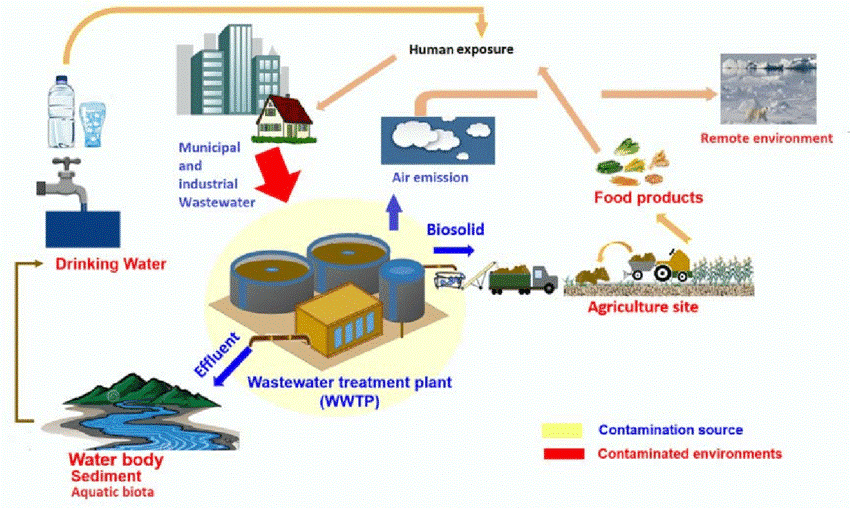Advanced Methods for Reliable PFAS Contamination Elimination
The relentless difficulty of PFAS contamination necessitates the exploration of advanced elimination methods that can successfully resolve these hazardous compounds. Ingenious innovations, such as advanced oxidation processes and numerous adsorption strategies, have actually emerged as promising solutions in mitigating PFAS from affected settings.
Understanding PFAS Characteristics
Although per- and polyfluoroalkyl compounds (PFAS) have been widely utilized in numerous commercial and consumer products due to their one-of-a-kind properties, their persistence in the atmosphere presents substantial difficulties to public wellness and security. PFAS are a group of artificial chemicals identified by a carbon-fluorine bond, among the best chemical bonds recognized, which contributes to their outstanding security and resistance to degradation. This security permits PFAS to gather in the setting and living organisms, leading to possible damaging health and wellness results.
These same residential properties contribute to their ecological perseverance, as PFAS do not easily break down with natural processes. Comprehending the chemical properties of PFAS is important for developing effective strategies to manage and mitigate their environmental impact.
Ingenious Removal Technologies
The perseverance of PFAS in the environment has actually stimulated the advancement of innovative removal technologies aimed at properly removing these pollutants from affected environments. Among the most appealing approaches are sophisticated oxidation processes (AOPs), which make use of effective oxidants to break down PFAS compounds into less damaging materials. AOPs can be tailored to target details PFAS frameworks, enhancing their efficiency.
An additional emerging innovation is using adsorption media, such as triggered carbon and ion exchange resins, which can precisely catch PFAS from polluted water. These materials have revealed substantial removal efficiencies, although routine replacement and regrowth are required to keep performance.
Membrane layer filtration strategies, including reverse osmosis and nanofiltration, are additionally getting traction in PFAS removal. These techniques can efficiently separate PFAS from water, offering a viable service for treating contaminated resources. Furthermore, thermal therapy approaches, such as incineration, can break down PFAS right into safe results, though they require mindful management to manage emissions.
Jointly, these ingenious remediation technologies represent substantial advancements in the recurring battle versus PFAS contamination, offering numerous methods to restore damaged environments and shield public health and wellness.

Bioremediation Strategies
Bioremediation methods provide an appealing method to addressing PFAS contamination by taking advantage of the all-natural capacities of microbes to degrade these relentless substances (m270 waste management). This technique includes making use of microorganisms, fungi, and various other microbes that can metabolize or change PFAS materials into much less harmful byproducts
Recent improvements in molecular biology and ecological microbiology have improved our understanding of microbial areas and their potential duties in PFAS degradation. Scientists are proactively checking out details stress of microorganisms, such as Pseudomonas and Bacillus, which have demonstrated the capacity to break down specific PFAS substances.
Sitting bioremediation techniques, where microbes are stimulated directly in infected environments, can be especially effective. This technique frequently involves the application of nutrients check out this site or electron benefactors to advertise microbial growth and task. Furthermore, ex-spouse situ methods, such as bioreactors, enable regulated conditions that can enhance destruction prices.
Despite the pledge of bioremediation, difficulties remain, including the complex nature of PFAS substances and the demand for substantial field screening - m270 waste management. Continued research and advancement will certainly be important to improve these techniques and analyze their performance in diverse ecological contexts
Adsorption and Filtration Techniques
Resolving PFAS contamination usually includes employing adsorption and filtration methods, which are designed to remove these relentless chemicals from water and dirt. Amongst the different methods, activated carbon adsorption is widely utilized as a result of its high surface location and porosity, enabling effective trapping of PFAS particles. Granular turned on carbon (GAC) systems are specifically preferred for dealing with big quantities of polluted water, while powdered turned on carbon (SPECIAL-INTEREST GROUP) can be used for smaller-scale applications.
Ion exchange resins likewise reveal promise in PFAS elimination, operating by trading PFAS ions with much less harmful ions in the water. This method has demonstrated effectiveness in focusing PFAS compounds, facilitating their subsequent removal. Furthermore, membrane layer purification methods, such as reverse osmosis and nanofiltration, operate by utilizing semi-permeable membranes to different PFAS from water, successfully lowering their focus.
While these methods work, they should be thoroughly selected based upon the certain PFAS compounds present and the ecological context. Continual advancements in products scientific research and engineering are causing the advancement of novel adsorbents and filtration systems that enhance removal performances and decrease operational prices, thus improving general remediation initiatives.
Regulatory and Plan Considerations
Exactly how can effective governing frameworks boost the administration of PFAS contamination? Extensive policies are necessary to make sure a coordinated and durable response to the difficulties postured by per- and polyfluoroalkyl substances (PFAS) Laws can develop clear standards for monitoring, reporting, and remediating PFAS-contaminated sites, promoting liability among markets and public entities. (m270 waste management)

Furthermore, economic incentives and gives can be incorporated into policies to urge the adoption of advanced remediation modern technologies. Policymakers need to likewise prioritize study and advancement, making sure that emerging techniques for PFAS elimination are over here confirmed and implemented efficiently.
Additionally, public recognition and involvement are crucial elements of any type of regulative method, empowering communities to advocate for their health and wellness. Ultimately, a well-structured regulatory environment will not only boost the monitoring of PFAS contamination but also advertise lasting techniques that shield future generations.
Verdict
In recap, the intricacy of PFAS contamination requires the fostering of sophisticated remediation techniques. Ingenious innovations such as innovative oxidation procedures, adsorption methods, and membrane layer purification have actually demonstrated substantial efficacy in removing these consistent substances from contaminated water resources. In addition, regulative frameworks have to evolve to support the execution of these modern technologies, ensuring secure and effective administration of PFAS contaminants. Continued research study and growth in this field remain essential to dealing with the obstacles posed by PFAS contamination.